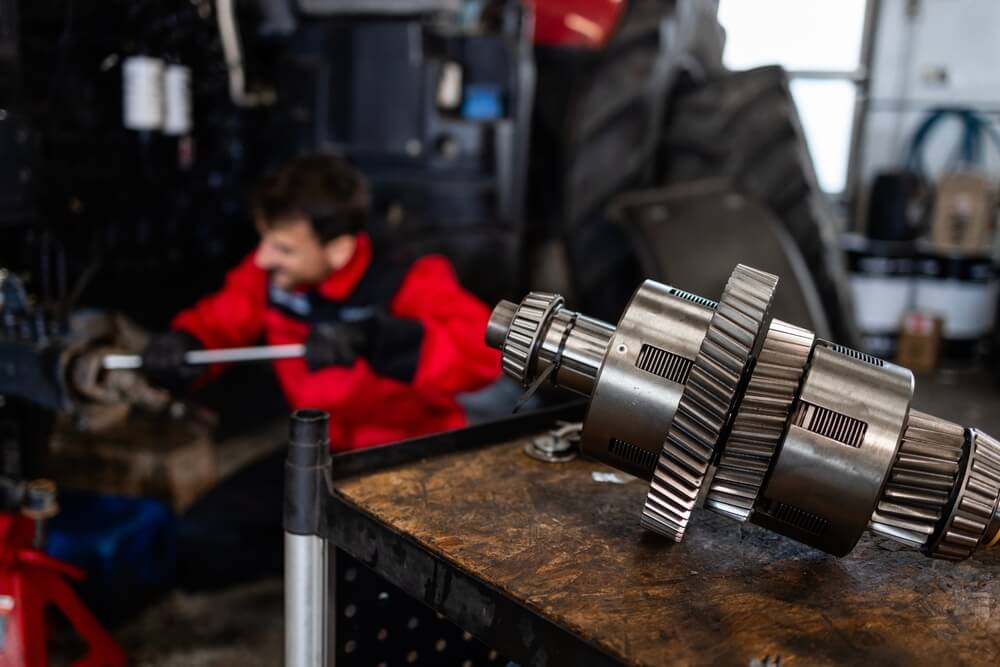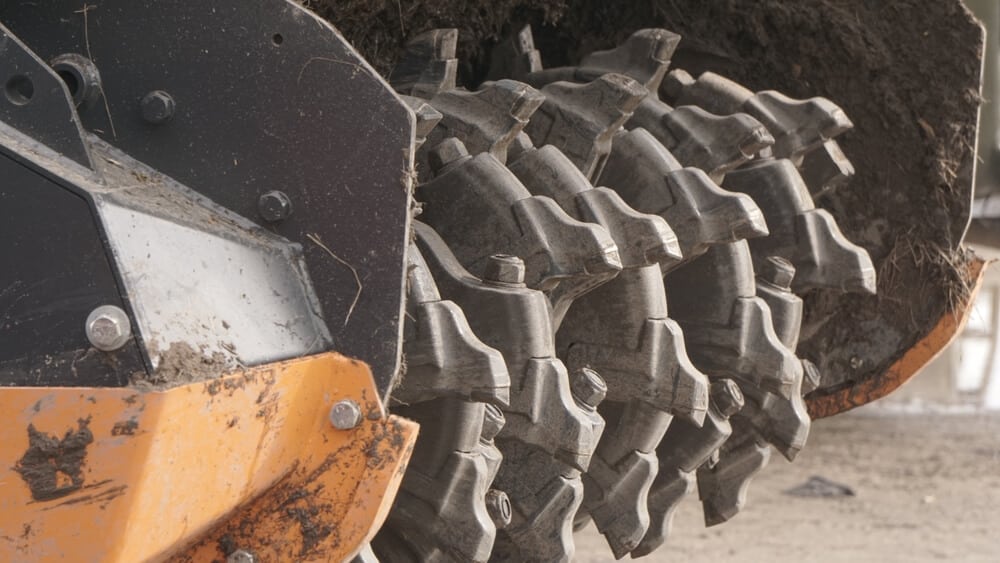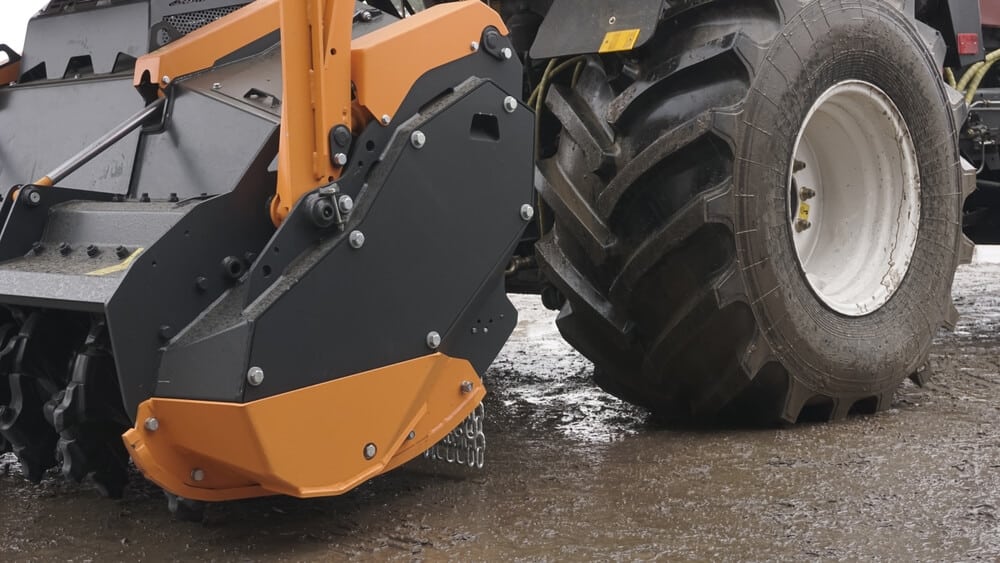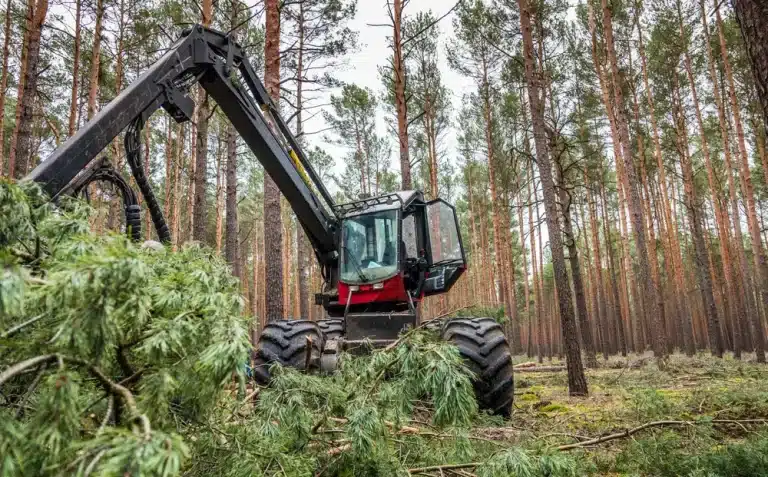A forestry mulcher is more than a machine, it is a central tool in land clearing, vegetation control, and sustainable site preparation. Whether mounted on a skid steer or a spider excavator, your mulcher works in extreme conditions that test every mechanical part. Routine care is not optional, it is essential to ensure durability, safety, and field efficiency. This guide explains how to keep your forestry mulcher in peak condition, extend its lifespan, and reduce your downtime.
To learn more about the types of jobs these machines handle, visit our applications page. If you’re new here, explore our about section to understand our mission and services.
Know your equipment inside and out
Understanding your machine’s design and purpose is the foundation of any successful maintenance routine. Each component must be inspected with precision and maintained with consistency to support long term productivity.
The basics of mulching machinery
A forestry mulcher grinds, shreds, and clears vegetation through a drum loaded with steel teeth. That drum rotates at high speed, powered by a hydraulic system linked to the host machine’s engine. This process allows for consistent vegetation breakdown across varied terrain. The machine’s performance depends on the condition of these core elements, so early detection of wear is key to prevention.
Learn more about the variations in skid steer mulchers versus spider excavator mulchers and how each design impacts maintenance strategy.
Choosing the right mulcher type
There are three common mulcher types, each with distinct characteristics that affect upkeep:
- Drum mulchers for large surface jobs and heavy vegetation
- Disc mulchers for controlled, precision-oriented work
- Flail mulchers for lighter brush and softer terrain
- Carrier-mounted heads for specific hydraulic configurations
Knowing which type you use helps tailor your maintenance efforts. You can learn more by reviewing our article on understanding mulcher attachments for spider excavators.
Get familiar with vegetation types
Certain vegetation causes faster wear on teeth and blades. Hardwoods, rocky undergrowth, and dense root networks all place added pressure on the cutting head. By understanding what your mulcher encounters, you can better prepare replacement parts and adjust inspection frequency.
For a breakdown of the plant types mulchers can manage, visit our guide on what types of vegetation a mulcher can handle.
Perform inspections that prevent downtime

Routine inspections detect small issues before they become costly problems. Whether you are starting a new project or working in steep terrain, inspections allow your machine to deliver consistent results.
What to check every day on your mulcher
Before powering up, walk around your mulcher and look for visual indicators of stress or wear. This includes leaks, loose parts, and damage to moving components. Pay attention to:
- Hydraulic hose connections
- Mounting bolts and fasteners
- Rotor and blade alignment
- Fluid levels and pressure zones
This daily habit can preserve your machine’s power and protect operators from equipment failure. For long term productivity, consistency matters more than complexity. For more field-specific practices, read our safety tips for operating in tough terrain.
Blade condition and sharpness
Blades that lose their edge reduce cutting performance and increase engine load. Inspect each tooth for cracks, chips, or bluntness. If cutting becomes irregular or resistance increases, it is time to sharpen or replace the blades. Follow the angle recommendations from your equipment manual and keep spare teeth ready to avoid delays on site.
If you use skid steers, this is especially important. Check out our article on how to optimize mulcher performance on skid steer machines for tips.
Monitor the hydraulic system
Hydraulic pressure is the core driver of performance. Leaks or low flow reduce rotation speed and cut quality. Inspect connections, filters, and fluid levels regularly. If hydraulic temperature rises too fast, it may signal contamination or internal resistance. Always use fluid types recommended by your machine manufacturer.
Keep your machine mulcher clean and ready
A clean forestry mulcher runs cooler, lasts longer, and stays safer. Debris causes heat buildup and corrosion, especially around moving parts and vulnerable joints. After each workday, a proper cleaning routine resets your machine for the next job.
Focus on the undercarriage
The lower structure is exposed to mud, stones, and organic buildup. Clean around the rollers, frame, and any exposed seals. Use a high pressure washer and inspect for cracks or metal fatigue after cleaning. This habit protects your investment and ensures smoother mobility on rough ground.
Explore our article on post-disaster mulching tools to understand how cleanup challenges affect undercarriage conditions.
Clear the cutting chamber
Residue left in the chamber affects blade balance and mulching quality. Debris buildup causes vibration and rotor misalignment. After each operation, remove compacted material from inside the chamber walls and check for lodged wood or metal. If you use your machine for wildfire prevention, this step also reduces the risk of overheating.
How to clean the cutting chamber of a forestry mulcher
Our step-by-step process to properly clean and maintain the mulcher’s cutting chamber.
Step 1: Turn off and secure the machine
Make sure the mulcher is shut down and disconnected from power. Park it on stable ground.
Step 2: Remove built-up debris
Use a tool or gloved hand to remove branches, vegetation, and dirt trapped inside the chamber.
Step 3: Inspect internal surfaces and teeth
Look closely for cracks, rust, or wear on the chamber walls. Examine the teeth for dull edges or damage.
Step 4: Use water or compressed air
Use a pressure washer or air compressor to clean remaining debris. Avoid letting water enter sensitive mechanical parts.
Learn more about ecological responsibility in our article on how mulchers help reduce wildfire risks in dry zones.
Maintain rotor balance
The rotor is the heart of your mulcher. Imbalance from worn teeth or uneven buildup causes mechanical stress and may lead to part failure. After cleaning, rotate the drum manually and listen for irregular resistance. If needed, rebalance the rotor or contact a technician.
For more insight into machine performance under pressure, explore our service options and request a free quote for advanced field maintenance.
Invest in long term performance

Maintenance is not just about machine survival, it supports project success and operator safety. Each task you complete with a well-maintained mulcher adds value to your operation. Whether you are clearing brush in remote terrain or supporting sustainable land management, the condition of your equipment shapes your results.
Stay prepared, keep your machine sharp and ready to use. For help with equipment setup or a custom quote, contact our team through the contact page or request your free quote here.
Mulcher maintenance FAQ
- How often should I inspect the teeth and blades of my forestry mulcher?
You should inspect the teeth and blades before each use. Look for dull edges, cracks, or any sign of wear. Replace or sharpen them as needed to maintain efficient cutting and reduce stress on the machine. - Why is it important to clean the undercarriage of my mulcher?
Cleaning the undercarriage prevents debris buildup and corrosion. It also lets you spot wear or damage early, helping you avoid breakdowns and extend the machine’s lifespan. - What should I check daily on my forestry mulcher?
Each day, visually inspect the hydraulic system, belts, bolts, hoses, and cutting tools. Make sure there are no leaks, loose parts, or visible damage. This keeps your equipment ready for hard field work. - What type of hydraulic oil is best for a forestry mulcher?
Always use the hydraulic oil recommended by the manufacturer. High-quality, temperature-resistant oil helps maintain consistent performance and protects internal components from excessive wear and overheating. - How can I improve the long-term performance of my forestry mulcher?
Stick to a strict maintenance routine that includes daily inspections, proper lubrication, timely replacement of worn teeth, and regular cleaning of the undercarriage and cutting chamber. Routine care keeps your machine efficient and field-ready longer.



